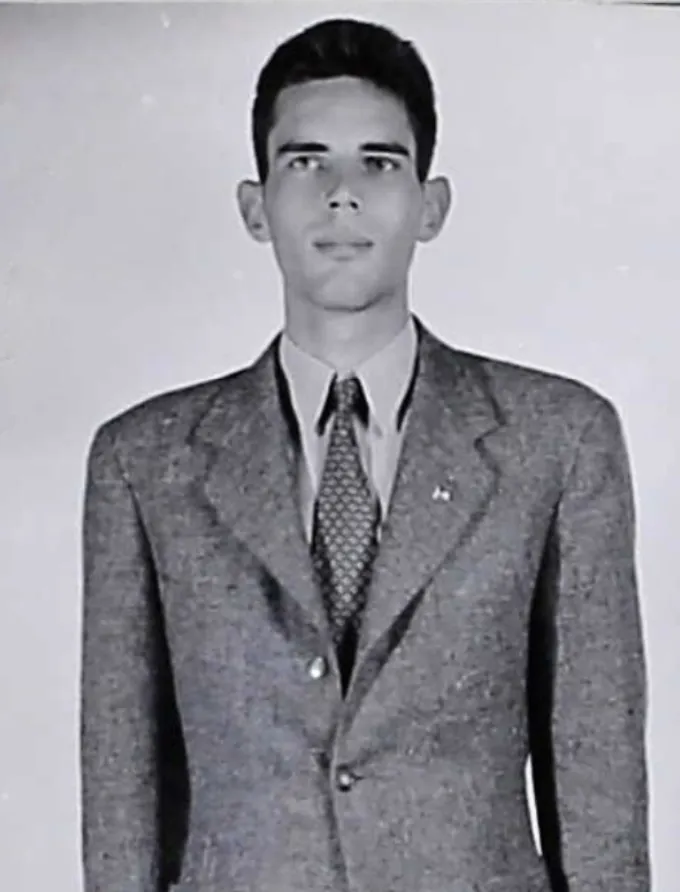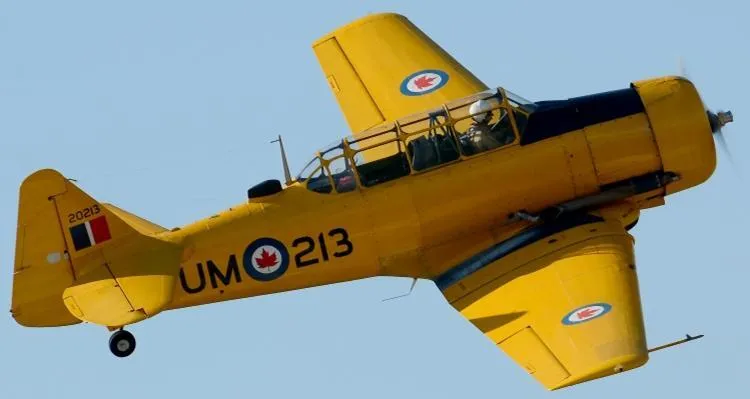Armour, Albert Stewart
Killed in Flying Accident 1942-03-22


Birth Date: 1919
Born:
Son of Sara F. Armour, of Santa Monica California, U.S.A.; husband of Mary Gwendolyn Armour, of Port Perry.
Home: Santa Monica, California, USA
Enlistment:
Enlistment Date: Unknown
Service
RCAF
Unit
3 (Comm) FU- Ferry Unit
Base
RCAF Stn. Trenton, Ontario
Rank
Flying Officer
Position
Flying Officer
Service Numbers
C/4010
First Burial
 Glenwood Cemetery At Picton, Ontario
Glenwood Cemetery At Picton, Ontario
3 Communications and Ferry Unit. Flying Officer Armour was killed when his NA-26 aircraft 3345 crashed in a snow storm ten miles east of Kingman, Maine, USA.
This incident involved multiple aircraft:
- Harvard NA-26 Serial: 3345
All the above aircraft in the above list are referenced in this report.
North American Harvard NA-26 NA-44 NA-61 NA-66 NA75 NA-76 NA-81

Canadian Warplane Heritage Museum
The North American Harvard appeared in 1937, in response to a US Air Corps proposal for an advanced trainer. The first of 50 Harvard Mk. Is ordered by the Canadian Government were delivered to RCAF Sea Island, BC in July 1939. By early 1940, the Mk. II was being assembled in California with an all metal fuselage replacing the original tube and fabric structure. 1200 Mk. IIs were supplied from US sources, until Canadian built Harvards started being produced in 1941.
In August 1938, Noorduyn Aviation of Montreal farsightedly signed an agreement with North American, to build the Harvard under licence. When the British Commonwealth Air Training Plan (BCATP) came into being in December 1939, Noorduyn received its first orders and went on to produce nearly 2800 Harvard Mk. IIBs for the RCAF and the RAF, between 1940 and 1945. In Canada, Harvard Mk. IIBs were used as advanced trainers with the BCATP at fifteen Service Flying Training Schools across the nation. They helped pilots make to the transition from low powered primary trainers, like Fleet Finch or the de Havilland Tiger Moth, to high performance front line fighters such as the Spitfire.
At the end of WW II, although the RCAF retained the Harvard as a trainer, a large number of them were sold off to civilian operators. The RCAF soon regretted this, for by 1949 the Cold War with the Soviet Union was in full swing and the RCAF urgently needed trainers again. 100 T-6J Texans were leased temporarily from the USAF and a further 270 Harvards, the Mk. IV version, were ordered from Canadian Car & Foundry, Thunder Bay. The RCAF used the Harvard Mk. IV for a further fifteen years, before finally retiring it in 1966.
A total of 20,110 Harvards were built between 1938 and 1954, 3,370 of them in Canada. Countless numbers of privately owned Harvards are still flying today.
Canadian Warplane Heritage Museum's Harvard Mk. IV was built by Canadian Car & Foundry, Thunder Bay, Ontario in late 1951. The aircraft saw service at four RCAF flying schools across the nation until it was sold to a civilian owner in 1965. It was the third aircraft to join the Museum after Dennis Bradley, Alan Ness and John Weir donated it in 1973.Canadian Warplane Heritage Museum
Harvard 3345
Harvard NA-26 3345
Built as North American company demonstrator, first retractable gear prototype for Harvard/Yale/Texan family. Registered NX18990. Sold second hand to RCAF, after Harvard Mk. I order placed. Paid for by British Purchasing Comission, but ownership vested in RCAF under BCATP agreement. First assigned to No. 2 Service Flying Training School at Uplands, Ontario. To Central Flying School at RCAF Station Trenton March 1941. Brought up to partial Mk. II standards at No. 6 Repair Depot November 1941, but retained tube and fabric rear fuselage. Crashed 22 March 1942, near Kingman, Maine, en route to Moncton, NB. Being ferried by No. 3 TC Communications and Ferry Flight. Became lost in a snow storm, crew bailed out. Flying Officer S. Armour killed, Leading Aircraftman F.B. Farrell survived. Surveyed at No. 4 Repair Depot at Scoudouc, NB.1940-07-23 Taken on Strength second hand 2019-08-20
1942-March-22 Accident: 3 COMMUNICATION & Ferry FLIGHT Loc: Kingman Maine Names: Armour | Farrell
1942-05-20 Struck off Strength 2022-02-07
 Canadian Virtual War Memorial
Canadian Virtual War Memorial Harvard Advanced Trainer
Harvard Advanced Trainer Wikipedia Harvard Advanced Trainer
Wikipedia Harvard Advanced Trainer Harold A Skaarup Web Page
Harold A Skaarup Web Page